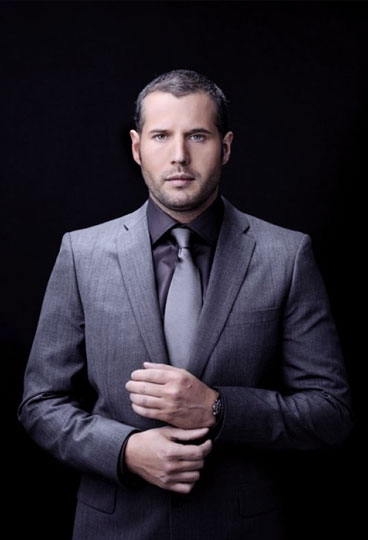Walt Disney’s Success Story: From Bankruptcy to the Birth of Mickey and Disneyland
Quick facts (for your article intro)
-
Full name: Walter Elias Disney
-
Born: December 5, 1901, Chicago, Illinois • Died: December 15, 1966, Burbank, California
-
Roles: Animator, producer, voice of early Mickey Mouse, entrepreneur, theme-park pioneer
-
Record: 22 competitive Oscars + 4 honorary (most by any individual) Encyclopedia BritannicaWikipedia
Early life: paper routes, sketchbooks, and a wartime ambulance
Walt grew up between Chicago and Missouri, delivering newspapers before dawn and taking weekend art classes. At 16 he falsified his birth date to drive an ambulance for the Red Cross in France, covering it with cartoons. Back in the U.S. in 1919, he landed his first commercial art job in Kansas City—where he met fellow artist Ub Iwerks, the future genius of Disney animation. Wikipedia
First studio, first failure: Laugh-O-Gram (1922–1923)
Walt launched Laugh-O-Gram Films in Kansas City, producing modernized fairy-tale shorts. A shady New York distributor failed to pay; the company went bankrupt in 1923. The collapse forced Walt to pack a suitcase and a single reel—Alice’s Wonderland—and head west. Encyclopedia Britannica
⚠️ Myth check: You’ll often read that “Disney was fired by the Kansas City Star for lacking imagination.” Historians consider this anecdote unproven folklore. Stick to documented setbacks like the Laugh-O-Gram bankruptcy. Encyclopedia Britannica
Hollywood reboot: Disney Brothers Studio (1923–1927)
In Los Angeles, Walt and his brother Roy O. Disney formed Disney Brothers Cartoon Studio (the seed of today’s company). With distributor Margaret Winkler, they made the Alice Comedies, blending live action with cartoons—enough success to grow a small team and bring Iwerks to Hollywood. Encyclopedia Britannica
The Oswald shock (1928): losing a star, almost losing a studio
By 1927, Disney’s Oswald the Lucky Rabbit series was a hit—until producer Charles Mintz and Universal asserted ownership, cut Walt’s pay, and poached most of his animators. Walt walked away. On the train back to California, he vowed never to lose control of a character again. Wikipedia
Reinvention: Mickey Mouse & the sound revolution (1928)
Walt and Iwerks secretly developed a new star—Mickey Mouse—with Walt voicing him. After two silent shorts stalled, they bet everything on sound. Steamboat Willie premiered November 18, 1928, wowing audiences with synchronized audio and officially launching Mickey (and Minnie). It was a sensation and saved the studio. D23Disney Fandom
Scaling up: color, cameras, and standards nobody else attempted
Through the 1930s the studio pushed technology (three-strip Technicolor; the multiplane camera) and storytelling with Silly Symphonies, then set its sights on an “impossible” feature-length cartoon. Skeptics called it “Disney’s Folly.” Encyclopedia Britannica
“Disney’s Folly” pays off: Snow White (1937)
Walt mortgaged virtually everything to finish Snow White and the Seven Dwarfs. The gamble worked—the film became a global hit and a landmark in cinema history, funding a state-of-the-art studio in Burbank and cementing Disney’s reputation as animation’s pace-setter. Encyclopedia Britannica
Crisis years: labor strike (1941) & World War II
Rapid growth and uneven pay bands triggered the Disney animators’ strike in 1941, reshaping studio labor practices. Soon after, war commandeered the studio for training and propaganda films; finances were tight until post-war hits returned. These trials toughened Walt’s resolve and redirected him toward new frontiers. Cartoon BrewCalifornia State University, Los AngelesTIME
Television & the birth of a new medium: Disneyland (1955)
To fund a bold idea—a clean, story-driven park where families could share rides—Walt partnered with ABC on the TV show Walt Disney’s Disneyland. Disneyland opened July 17, 1955; opening day (“Black Sunday”) was chaotic, but the park quickly became a phenomenon and a template for themed entertainment worldwide. D23People.com
Later milestones and legacy
Post-war classics (Cinderella, 20,000 Leagues Under the Sea, Mary Poppins) kept the studio in front. Walt collected a record 22 competitive Oscars (plus 4 honorary), pioneered Audio-Animatronics, and sketched a city of tomorrow (EPCOT). A lifelong smoker, he died in 1966; Roy opened Walt Disney World in 1971 to complete his brother’s dream. Wikipedia
What, exactly, made Walt Disney succeed?
-
Control of IP: The Oswald lesson forged Disney’s iron rule—own your characters. Wikipedia
-
Taste + technology: He paired big creative bets with the newest tools (sound, color, multiplane, TV). Encyclopedia Britannica
-
Story first, always: He demanded emotional clarity and iterative craftsmanship, even when it meant starting over. (See Snow White’s years-long polish.) Encyclopedia Britannica
-
Experience design: Disneyland turned narrative into a place you can walk through—decades ahead of its time. D23
Mini-timeline you can drop straight into your article
-
1901: Born in Chicago. Encyclopedia Britannica
-
1918–19: Red Cross ambulance driver in France; returns to Kansas City. Wikipedia
-
1922–23: Opens Laugh-O-Gram; bankruptcy follows. Encyclopedia Britannica
-
1923: Moves to LA; founds Disney Brothers Studio with Roy; Alice Comedies. Encyclopedia Britannica
-
1927–28: Oswald hit → rights loss and staff poaching. Wikipedia
-
Nov 18, 1928: Steamboat Willie premieres; Mickey Mouse debuts. D23
-
1937: Snow White and the Seven Dwarfs premieres; huge success. Encyclopedia Britannica
-
1941: Disney animators’ strike. Cartoon Brew
-
WWII: Studio pivots to training/propaganda films. TIME
-
July 17, 1955: Disneyland opens (bumpy opening day; runaway success). People.com
-
1964: Mary Poppins wins five Oscars. Wikipedia
-
1966: Walt Disney dies; leaves plans for EPCOT. Wikipedia






.%20The%20image%20features%20a%20meditating%20figure%20seated%20in%20a%20lotus%20p.webp)








.%20The%20image%20features%20a%20meditating%20figure%20seated%20in%20a%20lotus%20p.webp)





